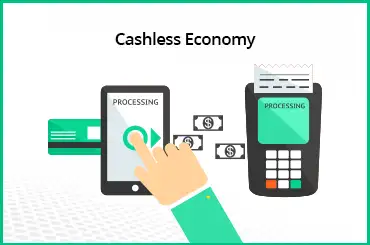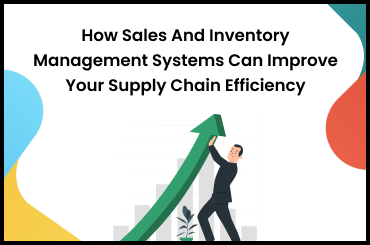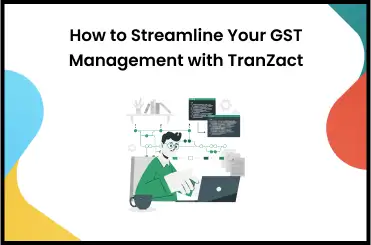What is order processing, and how does it work to make life easy and convenient for businesses? Order processing is the backbone of every manufacturing business, helping them to ensure orders are on track and processed without delays. In this article, you will learn more about the types of order processing systems, the steps included, their advantages and disadvantages. So let's begin.
What Is Order Processing?
Order processing is the step-by-step approach followed to order fulfilment that starts with receiving the orders to delivering the product to the end users. Receiving orders, shorting, packaging, and shipping the product to the customer are the important steps to fulfilling the order.
The answer to what is order processing can be simply defined as receiving the product orders by the customer and delivering it to their doorstep, followed by all the necessary steps. It includes perfectly packaging the box, prompt customer support, transparently sharing the shipping status, and more to successfully hand over the requested items to the customer, customer ensuring satisfaction and happiness.
What Are Order Processing Systems?
The order processing system is the procedure of capturing customer's detail and order for processing of the order and for management of the inventory. There are two methods, i.e. traditional method and the modern method, which are used to collect order details. These methods are used by different businesses depending on their size and nature.
Types of Order Processing Systems
Since you're now aware of what order processing is, it's time to understand the types of order fulfilment systems. Check out to explore all types to identify the most suitable processing system for your business.
Traditional order fulfillment system
Traditional order fulfilment involves the use of handwritten documents that are usually done by manual labour. This system is used by small businesses and retailers that do not require a vast workforce. A single person or a small team is responsible for creating order slips, packaging, and dropping the order to the courier company.
This type of order processing system involves manual accounting in which all the entries are handwritten in the ledgers. With this method, there is always a fear of misplacement of orders and accounting entries and high chances of human errors. So, this is considered the least reliable type of order management system that can be solved with a modern processing system.
Order management through call centers
The next type of system to manage orders is through call centers, where companies usually outsource the process. The call centers allow the buyers to place the order over a call, and the employee inputs the order into the computer for processing. Further, the process is continued to fulfil the order of the customers with the correct information of the user. One limitation still occurs with the customers is that they have no access to the catalogue to choose the variety.
Modern order fulfillment system
The processing system that involves the use of latest technologies and software is called the modern order fulfilment system. The use of specialized software helps to maintain data such as order management, inventories, and operations, and even maintains the customer's profile.
Being a technology-centric process, it reduces the chance of errors by human mistakes and improves the operational process. Cloud-based software allows you to access and maintain the data using the internet and even allows you to communicate with clients in other countries.
You can choose these types of order management processes and order fulfilment systems according to your business type. But the processing system needs various steps to manage that you can scroll down to know more about.
Order Processing Steps
Processing of orders comprises of five steps, from picking up the order to delivery, and sometimes contains a return process. Here is the breakdown of the order processing to understand the workflow.
Order Placement
The first step is order placement, where the business receives the order or the order detail from the customers. The order detail includes the item details, shipping details, and delivery address which is sent to Order Management System (OMS). Further, the OMS automatically determines the nearest warehouse to ship the product based on the delivery address and item availability.
Picking Inventory
The second step is picking inventory that includes a specified quantity of items to satisfy the customer. It is an important process to perform as it directly impacts the productivity of the workflow. Different picking strategies are used by businesses before shipping the order.
- Piece Picking
- Zone Picking
- Batch Picking
Smaller organizations may do this manually, but larger organizations use barcode scanners and other software for seamless order processing and automating the process.
Shorting
Shorting includes the process of separating the products based on the delivery address of the item. This step works on the basis of picking zones and the batch-picking strategy. The staff is involved in leading this process to ensure the correct delivery of items in proper condition and quantity.
Packaging
After shorting, the items are needed to be packed by the professionals to protect them from damage during transit. Orders are packed in proper boxes, weighed, and labelled appropriately with the delivery address and the other details of the customers. It is one of the important order processing steps that is needed, in order for orders to be packed according to the dimensions of the items maintaining the entire cost.
Shipping
Last is the shipping process, which involves the delivery of the order to the correct place. The step involves two different ways; shipping the individual product directly to the customer and shipping several products in bulk to one destination. The second method is more cost-effective for the overall cost of order processing.
Order Processing Factors
The order management process can differ across businesses, distribution centers, and shipping methods. So, considering the below factors can lead you to a seamless workflow in the whole order process.
Nature of the product
Different items need different conditions and temperatures to maintain during shipping. You can understand in-depth with an order processing example of shipment for perishable items such as fruits, vegetables, flowers, or dairy products that need to maintain the temperature and humidity while products such as fabrics don't.
Number of items
Bulk orders are packed and handled differently than small orders. Small orders can be shipped using postal services, whereas for bulk orders you may need to hire a freight service to the distribution centers.
Shipping packaging
Different products need specific packaging, as products like vinegar, juices, and other liquid items need bottles and tetra packs for packaging, but biscuits can be packed in boxes.
Productivity of workforce
Workforce is the crucial element for effective order processing. The unavailability of the workforce can directly impact your business, so automation is the best solution.
Seasonality
The last factor that affects order management is seasonality, as during peak seasons, the entire workflow increases, which decreases the speed of the entire operation. This results in a delay in the delivery of orders to customers.
Advantages of Order Processing
Every order processing system has its advantages and disadvantages that are needed to be assessed to get better output. Let's see the ultimate advantages of order processing if it is executed with the right approach.
- Automatically captures the requested product details.
- Customer data are prefilled in your enterprise resource planning (ERP) system.
- Decreases order fulfilment cost.
- Seamlessly manages shipping process.
- Improves the efficiency and accuracy of the supply chain.
- Fully organized to deliver products on time.
- Keeps your customer happy with transparency.
- Easy to manage bulk orders.
- Gain the confidence to trade in local and global markets with ease.
If you have chosen the right ERP system, you can leverage its full potential and get the advantage of all the features listed above. By adopting a state-of-art order processing management software or utility, you can efficiently manage your small or big business wings with no hassles.
Disadvantages of Order Processing
Though a well-engineered order processing system is crucial for managing complex or bulk tasks every day while fulfiling customer demand, it has certain challenges as well. Below are some disadvantages involved with this system, and you must avoid the same for a smooth business workflow.
- Need proper integration with other essential software to synchrnonize your business data.
- A highly complex system may need professionals to handle it and thus increasing implementation costs.
- The traditional order processing system can consume a lot of time to record orders and consume a large amount of papers, thereby increasing costs and harming the environment.
- Sometimes, it is hard to track down the errors that occur due to data captured by a manual order processing system.
Tips for Improving Order Processing
Here are a few tips that can help you improve the order processing workflow in your business:
Automate
Automate all the possible order processing tasks like shorting, picking, packaging, and shipping by using latest technologies such as barcodes. You can also invest in an automated software that helps you generate invoices and manage shipping status, inventory, user data, and other details with limited or zero human intervention. Automation also results in cost reduction and process optimization.
Improve efficiency
Using the latest software can enhance your workflow, but it's still essential to monitor your processes consistently. So, monitor your operational workflow regularly, identify potential problems and work on improvement. If needed, then never delay upgrading your existing tool or investing in reliable resources to improve order processing efficiency.
Streamline inventory management
Maintaining stock on hand is the most important area you need to work on for smooth management of orders. Understand demand, maintain optimum inventory levels accordingly, and ship orders immediately to maintain the workflow. Also, identify the most selling products and maintain stocks for those products well in advance.
Communication with customers
Keep communicating with customers throughout the order process by keeping them informed about the delivery status. You can assign a dedicated support team as well to solve their queries, and ask for feedback to build customer loyalty.
Professional Order Processing Can Help You Grow Your Business
By understanding what is order processing, importance of order processing and inventory management system, you can improve the productivity and efficiency of your business operations. Investing in the right and user-friendly order processing software is always recommended as it helps your business to flawlessly manage orders by syncing your inventory, shipping, customer details, and other data in one place.
TranZact centralizes all your sales and purchase orders and provides you with a centralized transaction view to accelerate order processing. In addition to streamlining order processing and management, it also helps you manage your inventory, production, sales and purchases over the cloud. This helps you to manage business operations easily.
FAQs on Order Processing
1. What is order management?
Order management is the process of order receiving, tracking, and delivery to end-users.
2. What is purchase order processing?
The PO or purchase order processing matches the details of goods ordered by the business from its suppliers.
3. What is order processing in logistics?
Order processing in logistics is the management of picking, sorting, tracking, and shipping of the products to maintain effective supply chain.
4. What is order processing tool?
It is a well-developed order processing software that ensures presence of all the needful data in a place for flawless order management operations.
















